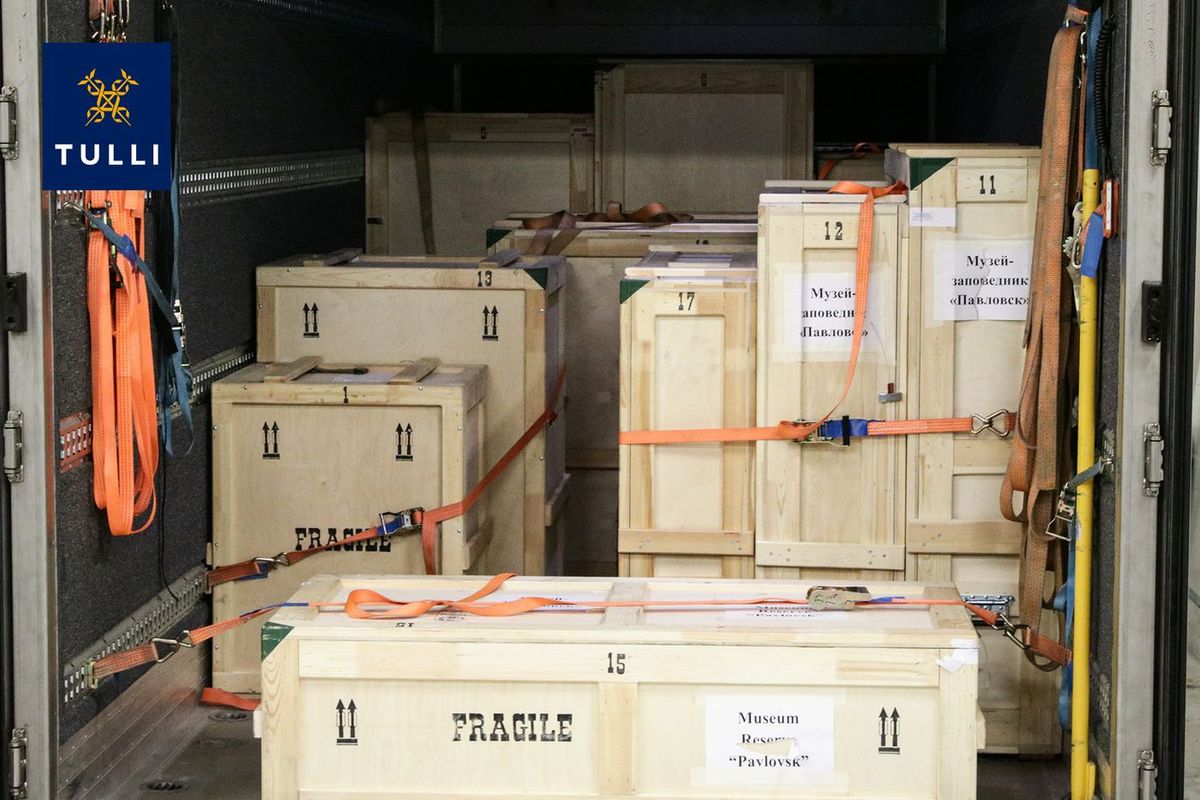Finnish customs have seized three shipments containing paintings and sculptures from Russian museums due to suspected violations of sanctions connected to Russia’s invasion, officials said at a news conference in Helsinki on Wednesday, according to Finnish and Russian media reports. The works of art have a total insurance value of €42m.
On Thursday, Russia’s Foreign Ministry called in Finland’s ambassador to protest over the seizure, the official Tass news agency has reported.
Russia has been subject to extensive sanctions following its 24 February invasion of Ukraine, and speculation has been rife about the potential impact on major Russian art works currently on loan abroad, especially the pre-revolutionary Morozov collection, which had been on loan from the State Hermitage Museum and State Tretyakov Gallery to the Fondation Louis Vuitton in Paris.
“The shipments that have now come under criminal investigation were detected as part of our customary enforcement work,” Sami Rakshit, the director of Finnish Customs’ Enforcement Department, says in a statement released by the agency.
Both Finnish customs and Russia’s culture ministry, according to reports in state media, say that the seized works were being shipped from exhibitions in Italy and Japan back to Russia via Finland.
The works, in sealed wooden crates, were impounded at the Vaalimaa border crossing on 1 and 2 April and are currently “being stored with overall consideration for their value, characteristics and safety.”
A spokeswoman for the Finnish agency tells The Art Newspaper in an email that “tens of pieces of art work had been seized” and it “will keep the art seized while they are needed for investigation as evidence.”
“What happens next will depend on the outcome of the investigation,” she says.
An image released by the agency shows crates labeled with the name of the Pavlovsk Museum Reserve.
On Monday, Russia’s culture ministry told the official Tass news agency that the seized works had been on loan to two exhibitions. One, The Grand Tour: The Dream of Italy from Venice to Pompeii, was at the Piazza Scala in Milan until 27 March with works from the State Hermitage Museum in Petersburg as well as the Tsarskoe Selo State Museum and Pavlovsk and Gatchina Palaces.
The second exhibition in Udine until 23 March included works from the State Tretyakov Gallery. Subsequent reports said the third shipment was of works from the Pushkin State Museum of Fine Arts in Moscow that had been at an exhibition in Japan.
Today, Russia’s Foreign Ministry, in its statement of protest against Finland’s seizure of the works, confirmed that they were returning from exhibitions in Italy and Japan.
Works by Titian on loan to Milan and Picasso to Rome from the Hermitage for other exhibitions were in the news after the invasion when the Russian culture ministry initially demanded that they be returned ahead of schedule, but then reversed its decision. Those exhibitions opened in February and are still running.
Both the Hermitage and Pushkin museums declined to comment; the Tretyakov did not respond. The Hermitage referred to comments by Mikhail Shvydkoy, the Russian foreign ministry’s international cultural envoy. He told the Interfax news agency that “a certain delay” had taken place at the Finnish border due to EU sanctions and Tass that it was connected to sanctions on the purchase and sale of antiques, not to the museum pieces.
"This has nothing to do with what was at the exhibitions," Shvydkoy told Tass. "Russian works returning from different countries after the completion of exhibition projects will return home after a series of bureaucratic procedures."
Russia’s Foreign Ministry put pressure on Finland today in a statement after the ambassador was called in.
"Moscow is waiting for the prompt decision of the Finnish authorities regarding the return of museum valuables to Russia. Until such a decision is made, the Finnish side is fully responsible for the storage of these works of art,” the statement says. “It will not succeed in avoiding responsibility in this question by hiding behind the position of the EU.”
On Tuesday, Russia's Foreign Ministry spokeswoman, Maria Zakharova—who has accused foreign media of deliberately spreading false information about the killing of civilians in Bucha near Kyiv, which Russia denies was committed by its troops—said the situation with the seized works was a “violation of international law”.
Russian arts commentators in Telegram channels have suggested that there might have been commercial interests in some of the exhibitions (something Zakharova denies) and that museum officials might have failed to ensure proper documentation of the works.
Zakharova says that on 5 April, the seized art was placed in temporary storage, in the presence of Russian embassy staff, at the Ateneum Art Museum in Helsinki. Russia has demanded that the sealed crates not be opened, she says.
St. Petersburg’s vice-governor in charge of culture, Boris Piotrovsky, the son of Hermitage director Mikhail Piotrovsky, said in a radio interview on Wednesday that “European cultural cooperation is in question for now,” but that “we won’t suffer greatly from this, only they will lose.”


